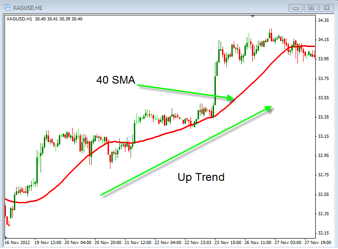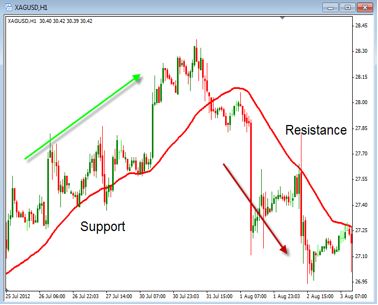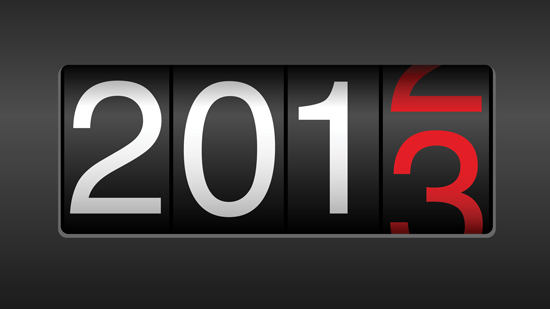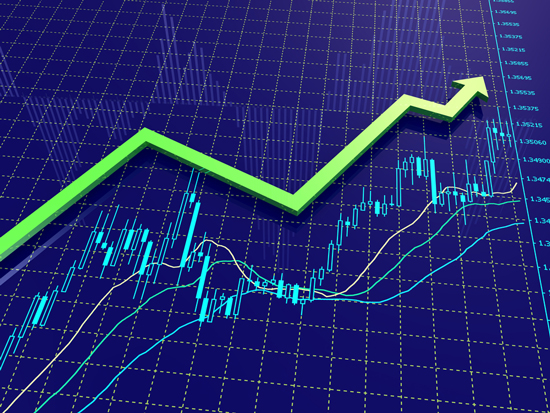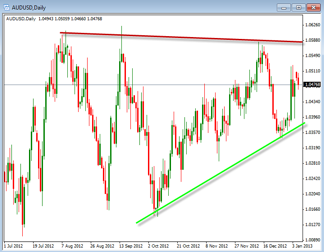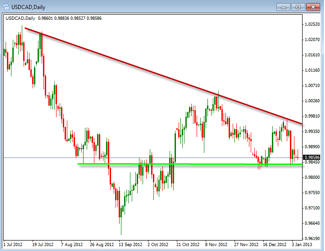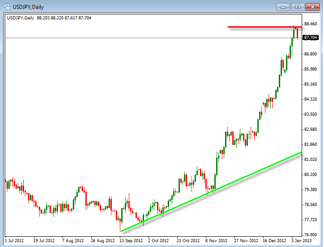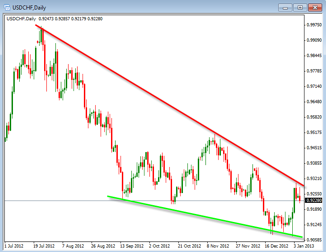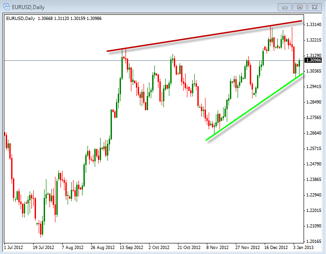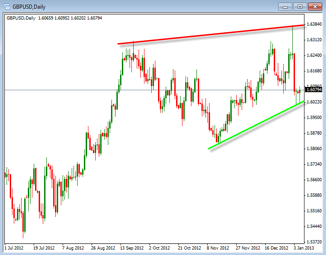Today, I want to give you some stock market trading tips. However, these tips will work with any kind of trading, Stocks, ETFs, or Forex. They work across the board because they’re all based on chart analysis which is ubiquitous no matter what you trade. Now, at the beginning of a new year I thought it would be appropriate to go back and take a look at some of the basic criteria we use when evaluating a chart. Again, these basics can be applied to any chart, any time frame and can be use on stocks, options, futures, metals or forex. So today we will look at some of these things using the chart of Silver.
Chart Type
The first thing we need to do when we evaluate a chart is to determine the type of charts we are using. Some might like the candlestick charts or line chart while others might like the bar chart. It really does not matter which charts we use but what is important is that we are comfortable with the type we choose. For our example we will use the candlestick chart.
Trends
The next thing we need to do when evaluating a chart is to determine the trend. The trend is something that every trader should know for the instrument that they are trading. It doesn’t matter if you are trend trading or counter trend trading you need to know where the trend is headed. You should have a simple way to identify the trend so you know if the momentum is moving up or down. One way to do this is to use a simple moving average. In the chart below you can see an example of how the Moving Average can show the direction that Silver is moving. This chart is the 1 hour chart using the 40 period Simple Moving Average. The trend is up when this line is going up and the trend is down when the line is going down. Once you know this you can begin to identify when to entry based off of your rules for going long or short.
Support and Resistance
The next thing we need to evaluate is where the most recent levels of support or resistance are located on the chart. The support is like the floor and the resistance is like the ceiling, areas where the price is likely to have a difficult time moving beyond. When the trend is moving up we want to look to buy as the price is near support and when the price is trending down we want to sell as it nears resistance. In the chart below you can see both areas of support and resistance and how to apply it to buying or selling.
The goal of evaluating charts is to find out areas to buy and sell. Take some time to review how you determine the trend and support/resistance so when you look at a chart you can quickly analyze what is going on. In the next couple of weeks we will spend some additional time looking further into each of these topics.

